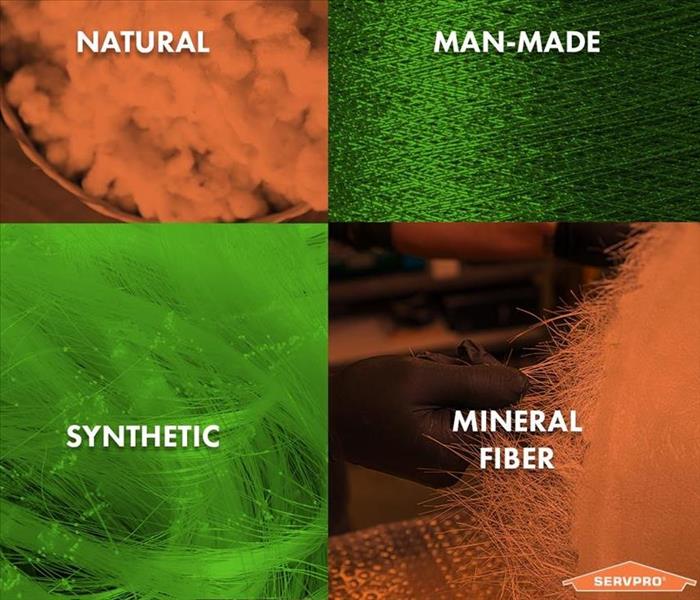Avoid a cleaning disaster by kowing the type of fibers.
5/1/2023 (Permalink)
Avoid a cleaning disaster by knowing the type of fibers in the material you're cleaning. Knowing the fiber type and using the right cleaning product and method could be the difference between restoration and replacement.
Natural Fibers: Plant fibres include seed hairs, such as cotton; stem (or bast) fibres, such as flax and hemp;leaf fibres, such as sisal; and husk fibres, such as coconut. Animal fibres include wool, hair and secretions, such as silk.
Man-Made Fibers: fibres are produced are known as polymers, a class of compounds characterized by long, chainlike molecules of great size and molecular weight. Many of the polymers that constitute man-made fibres are the same as or similar to compounds that make up plastics, rubbers, adhesives, and surface coatings.
Synthetic Fibers: made of synthetic materials, usually formed through chemical processes. The fibers are generally extracted during the chemical process using a spinneret, which is a device that takes polymers to form fibers.
Mineral fiber: fibrous inorganic substances made primarily from rock, clay, slag, or glass. These fibers are classified into three general groups: fiberglass (glass wool and glass filament), mineral wool (rock wool and slag wool), and refractory ceramic fibers (RCF).





 24/7 Emergency Service
24/7 Emergency Service
